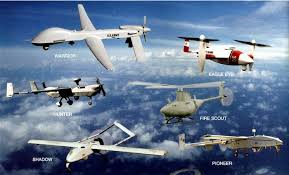Drones, or unmanned aerial vehicles have been the domain of mainly U.S. companies. You’ve read about them being used for surveillance as well as attack missions. You may have heard about companies like Amazon even thinking about using them for home delivery. This market (ahem) is set to take off.
The global market for unmanned aerial vehicles (UAVs) will more than double over the next decade, rising from $942 million this year to $2.3 billion in 2023, says Forecast International. The flying drone manufacturers worldwide will build about 1,000 UAVs of all types in 2014, with output rising to nearly 1,100 units in each of the following two years.

By 2017 worldwide UAV production could average about 960 unmanned aircraft annually, analysts say. Interestingly, the Aviation Industry Corporation of China (AVIC) is expected to be the biggest UAV manufacturer in the world over the next decade, with an anticipated $5.76 billion worth of UAVs to be manufactured, nearly all earmarked for Chinese consumption, according to the report.
Northrop Grumman Aerospace Systems, builder of the Air Force's RQ-4B Global Hawk and the Navy's MQ-4C Triton long-range surveillance UAVs, is forecast to make $2.58 billion of equipment, according to analysts. However, the demand from the Pentagon for UAVs is slackening, according to the report. Even with lower output from 2014 to 2023, Forecast International says that manufacturers still will improve their bottom line because the costs of new systems will increase.
The U.S. Department of Defense is expected to maintain its reliance on UAVs of all types, analysts say. Interest in UAVs overseas, meanwhile, also is growing. The value of land- and sea-based unmanned systems will rise toward the latter part of the 10-year period, analysts say. Land-based systems include bomb-disposal robots and remotely operated ground vehicles conducting reconnaissance in hazardous areas. The researchers expect that approximately 41,800 land- and sea-based unmanned systems worth about $10.5 billion are expected for production during the forecast period. For more information contact Forecast International online at www.forecastinternational.com.
Advertisement





